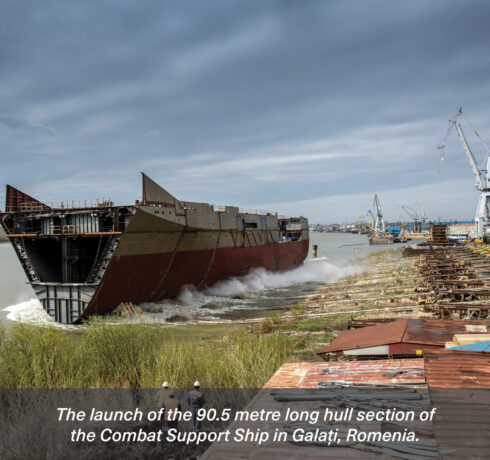In Galaţi, Romania, a large section of the hull of the Combat Support Ship (CSS) for the Royal Netherlands Navy was recently launched sideways. The ship is being built in modules and the 90.5-metre-long hull section is made up of Modules 2 and 3. These have been built separately but simultaneously at the shipyard since June last year and have recently been coupled together. The launch is an important milestone for the project.
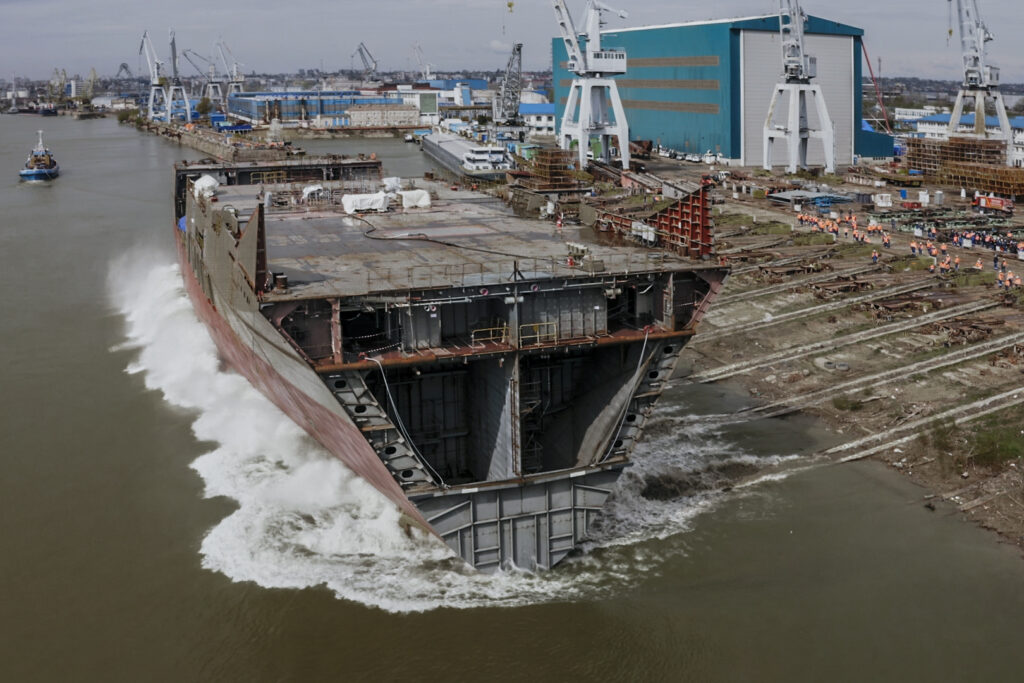 The hull section slid smoothly into the water of the Danube.
The hull section slid smoothly into the water of the Danube.
Damen Naval Project Director Arjan Risseeuw proudly watched as the hull section slid into the water of the Danube without any problems. “The launch is an important moment during construction. It is the first time ever that a part of the CSS floats in the water. It brings us a big step closer to the moment when the ship will be able to sail itself. It was an impressive sight to see the hull section sliding down the slope into the Danube.”
"It is thanks to the entire CSS team's efforts that we have reached this important milestone and are still on track for delivery in 2024.” Arjan Risseeuw
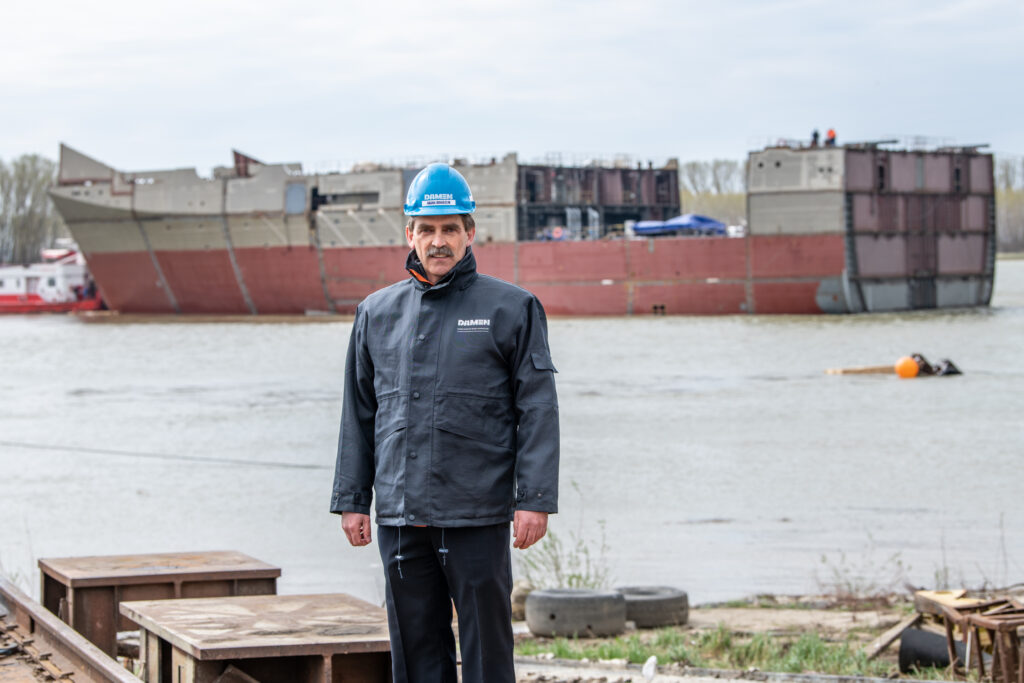 Damen Naval Project Director Arjan Risseeuw.
Damen Naval Project Director Arjan Risseeuw.
Modules 2 and 3 include the engine rooms with the four Wärtsilä W31 diesel generators. After the two modules were coupled together, partially painted and made watertight with temporary bulkheads, the hull section was ready for the launch. “It has been a busy time since we signed the contract in February 2020,” sums up Arjan. “More than 12,000 drawings and engineering documents have been made and almost 300 purchase orders placed. Of the 174 sections that will make up the ship, 80 are in these two modules, and over 3,600 tonnes of steel have been used.”
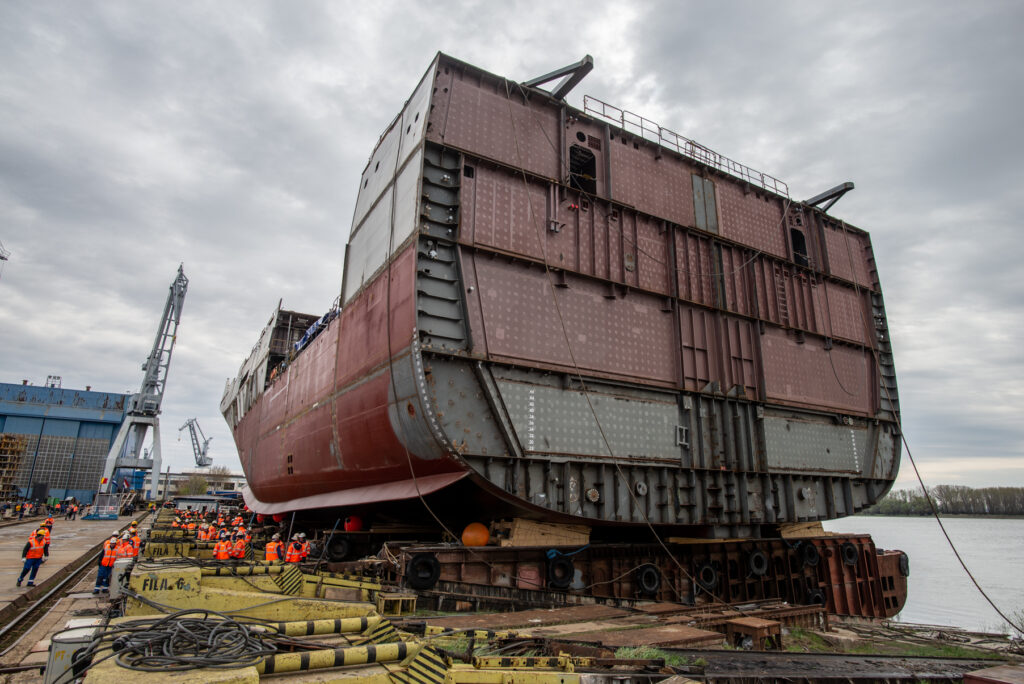 The 90.5 metre hull section is made up of Modules 2 and 3, which have been built separately but simultaneously.
The 90.5 metre hull section is made up of Modules 2 and 3, which have been built separately but simultaneously.
After the launch, the hull section was towed towards the dry dock where Module 1, the stern which includes the two Main Electrical Engines from General Electric, was built. In the coming months, the two sections will be joined together. Module 4, the bow section, is being built in separate parts that will also go to the dry dock to form the hull of the CSS. Module 5, the forward part of the superstructure including the bridge, will be placed while the ship is in dry dock as well.
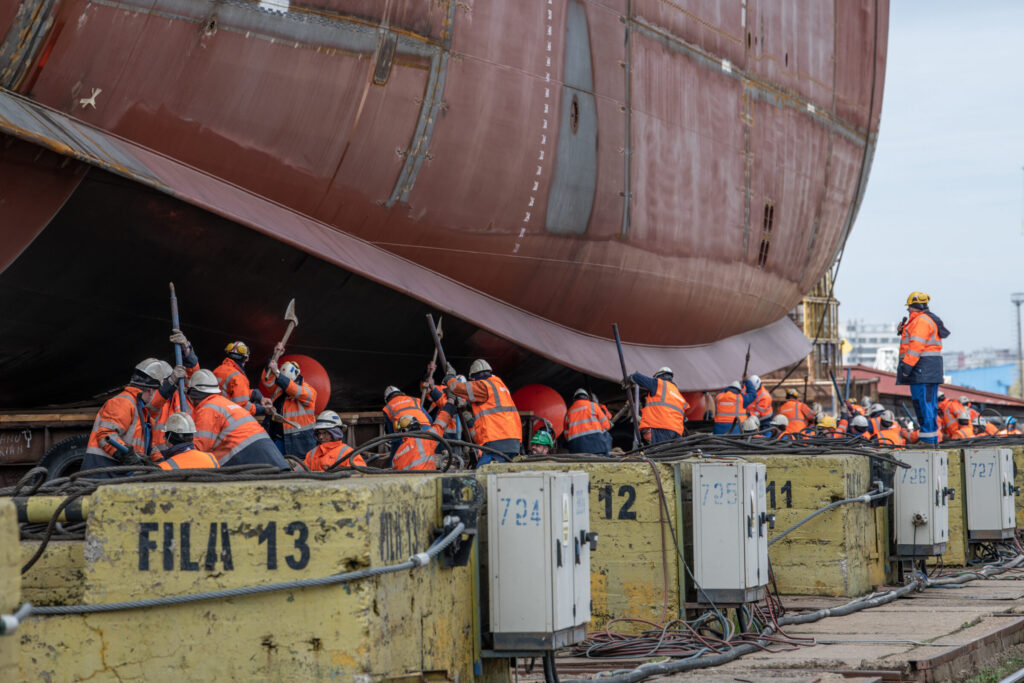 After the launch, the hull section was towed towards the dry dock where Module 1 was built.
After the launch, the hull section was towed towards the dry dock where Module 1 was built.
The next major step is the transfer of the then complete hull to the wet section of the dock in October. For this, a special buoyancy aid will be used to move the ship with ‘even keel’. When Module 6 with the mast is in place, the CSS will leave the dock and the ship will be further outfitted at the finishing quay and all systems will be commissioned. “There has been incredible hard work by the entire CSS team over the past few years; a joint effort of Damen Shipyard Galaţi, Damen Naval, the Defence Materiel Organisation (DMO) and our subcontractors. It is thanks to their efforts that we have reached this important milestone and are still on track for delivery in 2024,” Arjan concludes.

